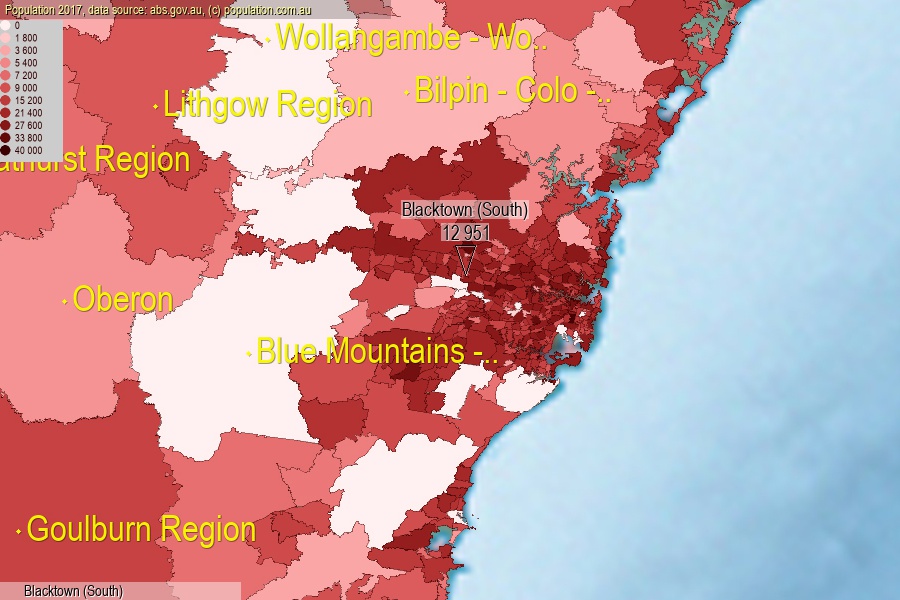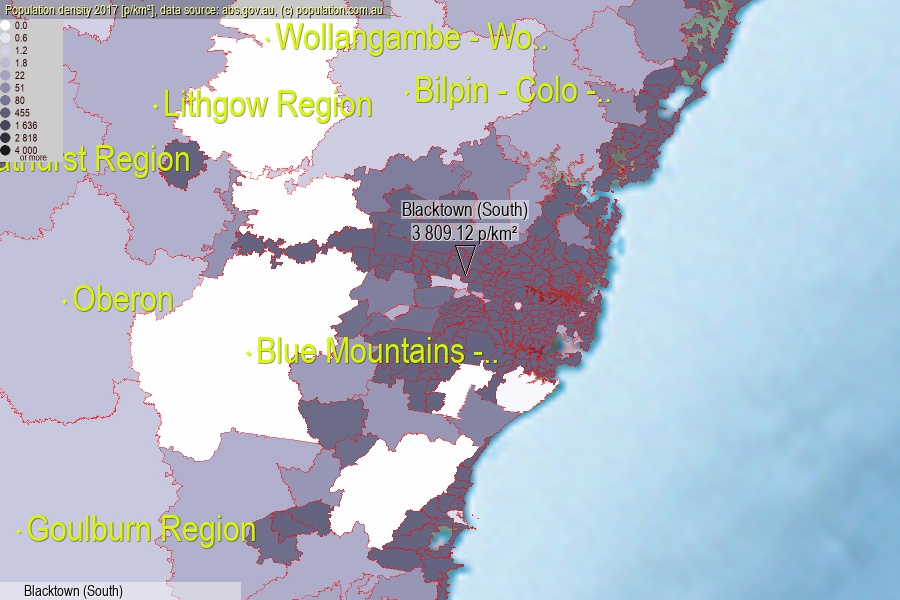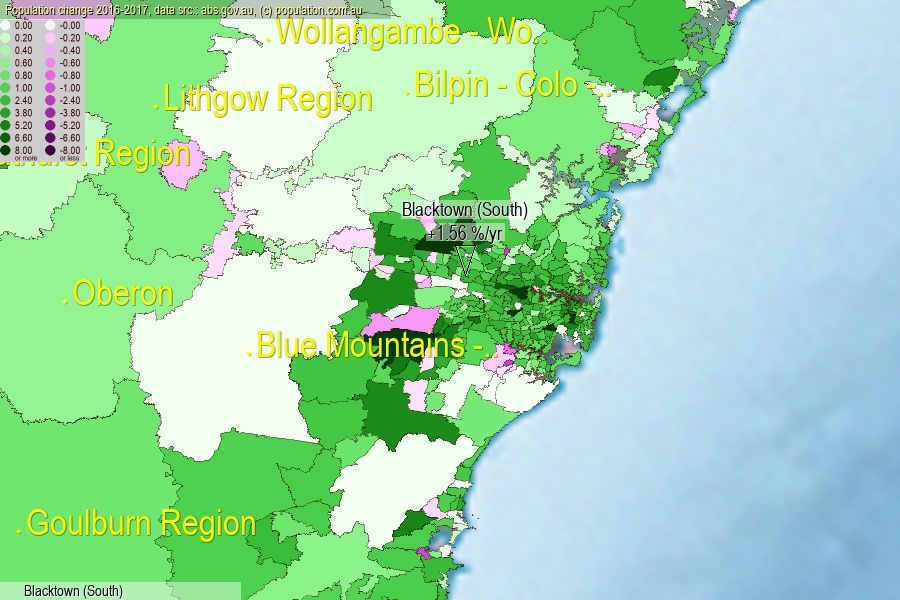 population.com.au
population.com.auLast official estimated population of Blacktown (South) (as Statistical Area Level 2) was 12 951 people (on 2017-06-30)[2]. This was 0.05% of total Australian population and 0.163% of NSW population. Area of Blacktown (South) is 3.40 km², in this year population density was 3 809.12 p/km² . If population growth rate would be same as in period 2016-2017 (+1.56%/yr), Blacktown (South) population in 2025 would be 14 659. [0]



Click to enlarge. Blacktown (South) is located in the center of the images.
Population [people], population density [p./km²] and population change [%/year] [2]
View borders » (new window) [4]
[2001-2002] +0.17 %/Yr.
[2002-2003] -0.36 %/Yr.
[2003-2004] +0.15 %/Yr.
[2004-2005] +0.68 %/Yr.
[2005-2006] +0.79 %/Yr.
[2006-2007] +1.49 %/Yr.
[2007-2008] +2.15 %/Yr.
[2008-2009] +1.20 %/Yr.
[2009-2010] +0.76 %/Yr.
[2010-2011] +0.65 %/Yr.
[2011-2012] +0.17 %/Yr.
[2012-2013] +1.31 %/Yr.
[2013-2014] +1.73 %/Yr.
[2014-2015] +1.07 %/Yr.
[2015-2016] +1.20 %/Yr.
[2016-2017] +1.56 %/Yr.
[0] Calculated with linear interpolation from officially estimated population
[1] Read more about SA2 and Australian Statistical Geography Standard (ASGS) on abs.gov.au
[2] Population data from Australian Bureau of Statistics (Population and density: 2017; change: 2016-2017)
[3] Digital Boundaries: Australian Statistical Geography Standard (ASGS) 2016.
[4] Border coordinates are simplifyed using Ramer-Douglas-Peucker algorithm.